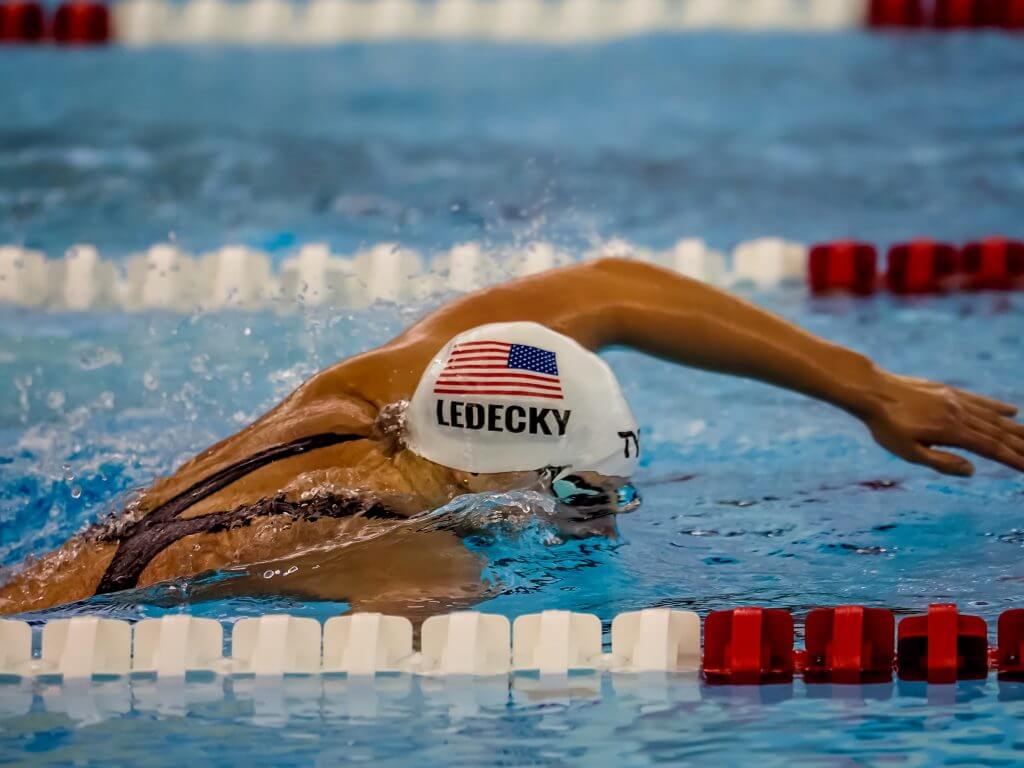Comparing and Contrasting: The Four Main Swimming Strokes

Comparing and Contrasting: The Four Main Swimming Strokes
By: Daniel Zeng, Swimming World Intern
Swimming obviously has its four main strokes: Butterfly, backstroke, breaststroke, and freestyle. Some are swum moving both arms together. Some are swum moving each arm separately. But there are many more distinctions and commonalities within the strokes, as well as the individuals that swim them.
Here, we break down each of the strokes.
Breaststroke(rs)
Might as well start with the first invented stroke.
Unique Features
- Commonly swum by “non-swimmers” at pools since there are more breathing chances when you pick your head above the water
- You rise highest out of the water (whole upper body)
- Holding a tight line is crucial
- No repeated dolphin kicks off the walls, instead replaced by a pullout
- Kick is what provides the forward propulsion, rather than the pull
Challenges
- Widely considered the hardest stroke purely for its hard-to-master timing
- Quite unnatural frog-like human movement causes knee problems, with some swimmers having to take time out of the pool as a result
- Unable to kick with normal fins on
The Bright Side
- Longer recovery time between cycles
- Swimmer always at the back of the lane on best-stroke sets can use their sharp, piercing kick to signal their fearful presence
Similarities to the Other Strokes
Butterfly – worthwhile glide & two-hand wall touch, slower stroke rate than backstroke and freestyle
__________________________________________________
(Butter)Fly(ers)
Peculiarly respected for their toughness, flyers develop an iron heart.
Unique Features
- Occupy a full lane width with their outstretched arms
- One-arm stroke is expected when someone comes down the lane past you, but is not as common now due to COVID-19 obliging teams to switch to one-way lanes
- Anyone will surely think of Michael Phelps if you say you swim butterfly
Challenges
- Hate best-stroke sets
- Mass fatigue to shoulder muscles, forcing their arms forward over the water too many times
The Bright Side
- Gain strong shoulder, arm, and abdominal muscles
- Earn respect by everyone from being able to power through the pain
__________________________________________________
Backstroke(rs)
The only stroke not swum on your stomach.
Unique Features
- Constant air access
- Ironically hyperventilate at meets due to not really having a set breathing pattern
Challenges
- Practice outdoors when sunny causes the sun’s glaring rays to blind your eyes, rendering it near impossible to swim straight
- 200 backstrokers truly know what dispair feels like when the race is nearing conclusion but the wall seems an eternity away, and your legs are comparable to sinking ships
Bright Side
- Strong leg muscles
- Can pull on the lane line to propel you forward if you’re tired (only in practice)
- Everyone can “become” a backstroker on best stroke sets, no freestyle, because you can float on your back and breathe
Similarities to the Other Strokes
Freestyle – Same flip turn, but a flag count to determine when to flip onto your stomach and turn
Freestyle – More body rotation than breaststroke and butterfly
__________________________________________________
Sprint Freestyle(rs)
Speedy.
Unique Features
- Aggressive and detail-oriented since every little mistake wastes valuable time
- Prioritizes kicking over pulling, opposing distance freestyle
Challenges
- Fatigue quicker due to faster lactic acid buildup
- Go out too fast sometimes on longer events
The Bright Side
- Participate in more relays, meaning more fun and team bonding
- Walls are your friends
Similarities to the Other Strokes
Butterfly – Possibly not breathing for a few strokes
Backstroke – Pull on the feet of the person in front to mess with them or signal they want to overtake
__________________________________________________
Distance Freestyle(rs)
Swimmers that like these races deserve their own separate category from the sprinters.
Unique Features
- Freestyle is the only stroke that has races longer than 200, namely 400, 500, 800, 1000, 1500, and 1650
- Breathing patterns vary widely, although a loping stroke has seemingly taken over, specifically breathing every two strokes
- Thrive during pull sets
- Splits are precisely memorized
- Red sparks joy, even though blood is red, and you’re mentally-spent by the end of a lengthy swim
- No chances are taken on reacting early after the beep
Challenges
- Less talkative to teammates
- Difficult to remain focused on long swims
The Bright Side
- Turns not as important compared to sprints, so a bad turn won’t derail you
- Don’t have to sprint every leg, unless you are Katie Ledecky
- Get to really know yourself since you have to keep yourself company for a while
__________________________________________________
All Four Strokes
Differences aside, we can all agree that all the strokes are connected in many ways. If you practice one, it will help your other strokes since they all share some basic components. Swimming any of them ideally requires a tight core and high body position to keep stiff but also loose. Swimming “forward, not up” is also shared amongst the strokes, so your effort moves you closer to the finish, not straight up and ultimately sinking you. We all also need to do drills and sets to maintain and improve our stroke, because keeping our feel for the water is crucial to grow as swimmers. At the end of the day, all we do is kick and pull.



